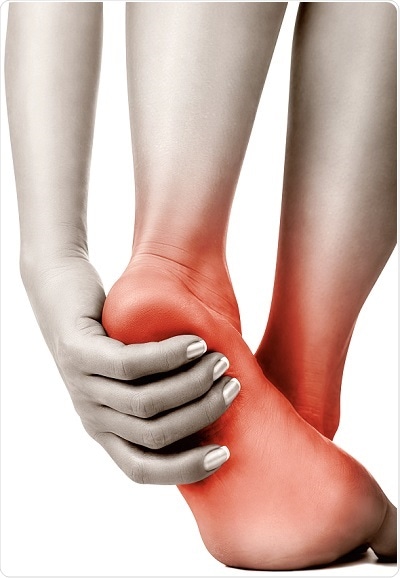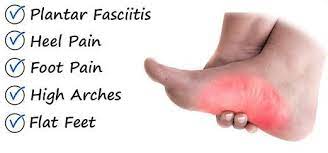Treatment, Procedure, Cost And Side Effects
What is the treatment?
Foot is the part of the human body at the bottom of the leg on which a person can stand. Foot pain can occur due to various causes. There can be irritation/inflammation of the tissues that connect the heel bone to the toes. Another type foot pain occurs when there is abnormal growth of bone at the bottom of the heel. It occurs due to wearing wrong shoes or having wrong standing and walking postures. Sometimes, a deep bruise can occur on the fat pad of the heel or ball of the foot. A heel fracture can occur due to deep injury in the foot resulting in tremendous pain. A pain can occur due to wearing of poorly fitting shoes, which is called Metatarsalgia. A problem known as Morton’s neuroma occurs when there is a thickening of tissue around the nerves of the foot. Sesamoiditis, is a type of foot pain that occurs when tendons around the foot swells up.

Typical gout or arthritis causes pain in the toes. Nerve problem, or neuropathy is a problem that is caused by diabetes is another problem that can lead to foot pain.
All these foot problems have various types of treatment as well. These include both home remedies as well as specialised treatments. But mostly, these problems do not involve too much medication. Proper care and exercising can solve these problems. Only if the pain is severe enough, it is recommended to visit a doctor for proper advice and necessary treatment.
How is the treatment done?
In case of foot pain related to pain in heel or Plantar fasciitis, the best remedies are taking rest, doing muscle stretches and taking medicines if required.
Heel spurs, or abnormal growth of bone at the bottom of the heel can give a person a lot of trouble. Still, this problem can be sorted more or less without a doctor’s help. It requires rest, wearing of pain relieving shoes, resting, doing certain physical exercises like stretching and so on. If the pain is unbearable, only then a person should take medicines or consult a doctor.
A stone bruise is said to happen when a deep cut occurs in the flat of the heels and this also requires the rest of the affected foot, proper application of ice in the foot is also required. If the pain persists or increases, medicines can be taken.

A heel fracture can occur which may not only crack a bone but also shatter it. For such a situation wearing of splint, usage of crutches, protection of the heel with pads, and physiotherapy are the most common treatments. If the pain is unbearable, or if it is not being cured, proper medications are required or surgery may be needed if the doctor feels it necessary.
Metatarsalgia is also another problem that doesn’t require seeing medical personnel. Wearing comfortable shoes, application of ice and taking rest will help to relieve the pain effectively.
Morton’s neuroma is a problem which can be solved by wearing shoe inserts, avoiding high heels and standing on feet for a long time. In case the pain doesn’t go easily, intake of steroids, medicines or even injection or surgery may be required to cure the pain under the guidance of proper medical personnel.
Sesamoiditis or inflammation of tendons can also be cured by following basic rules as mentioned above. In very few cases, special treatment like steroid injections may be required. In case of gout in the toes, basic care can be taken for pain relief, and consumption of food that increases gout can be reduced. Certain drugs like colchicine and prednisone can be taken.
Nerve damage can be cured by both home remedies like taking rest and light exercises, but surgery or injections should be taken if required and recommended by the doctor.
Who is eligible for the treatment? (When is the treatment done?)
Any person, irrespective of age are subjected to take these treatments if they suffer from foot pain. Foot problems can happen to any person but most of the problems can be cured easily at home. Rarely injections or surgery are required and it does not have any age barrier as such.
Who is not eligible for the treatment?
A person who has no problem with his/her foot is not subjected to treatment for foot pain. But, to prevent these problems, certain precautions can be taken so as to avoid foot pain altogether.
Are there any side effects?
The treatment for foot pain is more or less safe. However, if steroids are taken to treat certain conditions of foot pain, some problems can occur as these happen to be the common side effects for intake of steroids. These side effects include baldness, roughness of the skin, headache, growth deficit, cardiovascular diseases, kidney and liver problems, high blood pressure, and stomach ache. In case these problems become serious enough then the patient must consult his/her doctor.
What are the post-treatment guidelines?
There are no specific post-treatment guidelines for most of the foot-related problems because most of the problems are solved by home remedies. If a person undergoes surgery, then he/she might have to take a rest and do certain physiotherapies in order to heal completely. In case the pain persists then he/she need to consult their doctor to seek medical help.
How long does it take to recover?
Recovery after a foot surgery takes a maximum time of 4 to 5 months. Other problems that involve intake of medicine may require a maximum of 3 to 4 months for complete recovery. The problems that only require home remedies like taking rest and light exercises can have different effects on different people, some may cure sooner than the others, depending on their capability to recover.
Are the results of the treatment permanent?
After foot surgery along with proper rest and medication, the pain is usually cured permanently. The home remedies and exercises recommended during the treatment process should be followed strictly to avoid any further problems related to foot pain in the future.

Leave a Reply